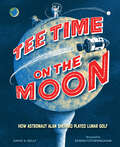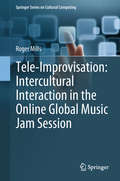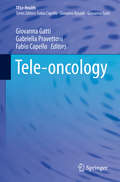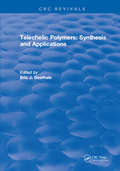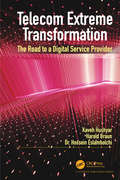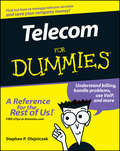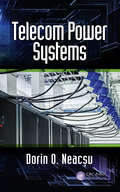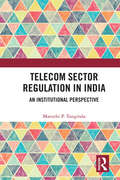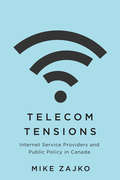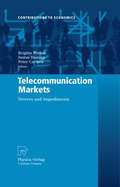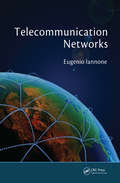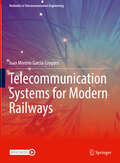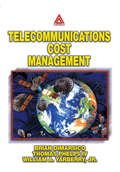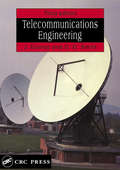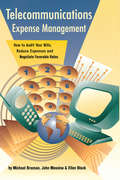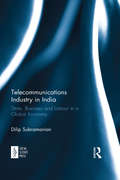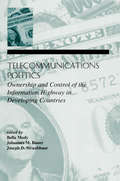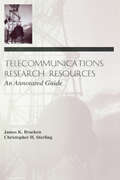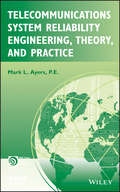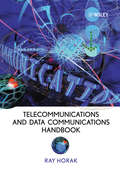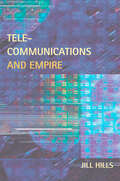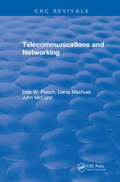- Table View
- List View
Tee Time on the Moon: How Astronaut Alan Shepard Played Lunar Golf
by David A. KellyAstronaut Alan Shepard's mission: Fly to the moon. Study it in more detail than ever before. Hit a golf ball in low gravity. But how far? Find out in this engaging STEM/STEAM picture book.In 1971, Alan Shepard and his fellow astronauts made their way to the Moon in the cramped Apollo 14 capsule. Their mission: Study the moon in more detail than ever before. While the world watched on TV, Shepard and Edgar Mitchell gathered rock and soil samples wearing stiff, heavy spacesuits. But Alan Shepard had a secret hidden in his sock: two tiny golf balls. Golf was Shepard&’s favorite sport. And since the moon has virtually no atmosphere and gravity that is only a fraction of the Earth&’s, a golf ball should have been able to go far. But did it?Here's the little-known but true story of an experiment that may have started as a stunt, but ended up making people think differently about the moon, ask questions, and look for answers.
Teen Engineers Tackle Turbines
by Mary Beth CoxTurbine designers are always looking for new ways to get more energy from wind.
Teen Innovators: Nine Young People Engineering a Better World with Creative Inventions
by Fred EstesA water purification system made of concrete and the same chemicals that block ultraviolet light in sunscreen. A robot made of PVC pipe that beat a shiny, eleven-thousand-dollar competitor in a robotics contest. An electricity-producing windmill built by a teen who taught himself physics by candlelight. Teen Innovators: Nine Young People Engineering a Better World with Creative Inventions reveals how people of any age or experience level can create something that changes others' lives through nothing more than hard work, creativity, and inspiration. (Oh, and perhaps a bit of electrical wire, some plastic piping, and a couple tampons.) Utilizing the principles of design thinking, these inventors all tinkered, experimented, and failed—repeatedly—until their inventions worked. The windmill produced light. The water became safe to drink. Jack Andraka: improved pancreatic cancer test Gitanjali Rao: device to detect lead in drinking water William Kamkwamba: improvised electrical generator using windmill in Malawi Austen Veseliza: digital display glove to aid people with speech impairment Deepika Kurup: easier, cheaper method to remove toxins from drinking water Cristian Arcega, Lorenzo Santillan, Oscar Vasquez, Luis Aranda: underwater robot Each of these stories offers inspiration to the next generation of teen innovators. You don't need a genius-level IQ or the latest and greatest technologies to create something that makes a difference. All you need is an idea and the determination to make it real.
Tele-Improvisation: Intercultural Interaction in the Online Global Music Jam Session (Springer Series on Cultural Computing)
by Roger MillsThis research monograph explores the rapidly expanding field of networked music making and the ways in which musicians of different cultures improvise together online. It draws on extensive research to uncover the creative and cognitive approaches that geographically dispersed musicians develop to interact in displaced tele-improvisatory collaboration. It presents a multimodal analysis of three tele-improvisatory performances that examine how cross-cultural musician’s express and perceive intentionality in these interactions, as well as their experiences of distributed agency and tele-presence.Tele-Improvisation: Intercultural Interaction in the Online Global Music Jam Session will provide essential reading for musician’s, postgraduate students, researchers and educators, working in the areas of telematic performance, musicology, music cognition, intercultural communication, distance collaboration and learning, digital humanities, Computer Supported Cooperative Work and HCI.
Tele-Stress: Relief for Call Center Stress
by Stephen CosciaThis book will help telephone professionals to: - Reduce on-the-job telephone stress - Enhance telephone communications skills - Build stronger customer relationships over the telephone - Learn practical, common sense telephone strategies that really work ;
Tele-oncology
by Fabio Capello Giovanna Gatti Gabriella PravettoniThis book explains how telemedicine can offer solutions capable of improving the care and survival rates of cancer patients and can also help patients to live a normal life in spite of their condition. Different fields of application - community, hospital and home based - are examined, and detailed attention is paid to the use of tele-oncology in rural/extreme rural settings and in developing countries. The impact of new technologies and the opportunities afforded by the social web are both discussed. The concluding chapters consider eLearning in relation to cancer care and assess the scope for education to improve prevention. No medical condition can shatter people's lives as cancer does today and the need to develop strategies to reduce the disease burden and improve quality of life is paramount. Readers will find this new volume in Springer's TELe Health series to be a rich source of information on the important contribution that can be made by telemedicine in achieving these goals.
Telechelic Polymers: Synthesis and Applications
by Eric J. GoethalsThis first-of-its-kind publication reviews the most impor-tant literature on the synthesis, properties, and applications of telechelic polymers. Written by a group of internationally known ex-perts in the field, this text contains a review table which allows the reader to search for given polymers with given end groups. Over 1,250 references are listed, covering primary and review articles as well as patents. Chapters include the preparation of telechelics by stepwise polymerization, anionic polymerization, radical polymer-ization, cationic polymerization, ring-opening polymerization and controlled polymer degradation. Polyols for the polyurethane pro-duction are described, as well as halato-telechelic polymers. Also, a more theoretical contribution on the physical properties of net-works formed from telechelic polymers is provided.
Telecom Extreme Transformation: The Road to a Digital Service Provider
by Harald Braun Kaveh Hushyar Hossein EslambolchiThe extreme transformation from a traditional Communication Service Provider (CSP) to a Digital Service Provider (DSP) status is covered in this book, specifically: Redefinition of the offerings of "connectivity services" to "digital services"; unification of legacy redundant networks into one; Redefinition of the measurements to customer-centric QoE for all digital and connectivity services; the Best-in-Industry processes and practices to ensure a sustainable network performance at a competitively operational efficiency; a Service-over-IP (SoIP) platform to enable the introduction of unified new services with a time-to-market urgency; the regulatory arrangement for content purification, to liberalize CSPs to become DSPs; an architecture for data mining and analytics; and a migration plan from a CSP to a DSP status. The book is recommended for telecom and digital service professionals planning to embark on transformational projects; telecom and technology equipment manufacturers to help with product development for a DSP status; institutional investors to evaluate and establish their investment decisions; telecom management consultants to help with a solid benchmark for transformation engagement; university students, majoring in telecommunication and technology products as a guide for career planning.
Telecom For Dummies
by Stephen P. OlejniczakWorldwide telecom spending was over $4 trillion in 2004, and virtually all 12 million businesses in the U.S. buy phone and other telecom servicesOur book shows people at small and medium-sized businesses how to make sense of telecom lingo and get the best dealsIncludes an overview of the major players in the telecom industry and an easy-to-understand explanation of the existing telecom infrastructureHelps people pinpoint the telecom services best suited to their business needs, understand billing, and troubleshoot problemsCovers emerging industry trends, such as Voice over Internet Protocol (VoIP), and how they can help businesses cut costs
Telecom Power Systems
by Dorin O. NeacșuThis book addresses topics specific to the application of power electronics to telecom systems. It follows the power flow from national grid down to the last low-voltage high current requirement of a processor. Auxiliary equipment requirements, such as uninterruptible power supplies, storage energy systems, or charging systems, are explained, along with peculiar classification or suggestions for usage. The presentation of each telecom power system is completed with a large number of practical examples to reinforce new material.
Telecom Sector Regulation in India: An Institutional Perspective
by Maruthi P. TangiralaThis book traces important legal and regulatory developments in the first two decades since the Telecom Regulatory Authority of India (TRAI) was established, along with its political and economic aspects. It narrates the story of the institutional progress of TRAI and its influence on the growth of India’s telecom sector. The telecom revolution was a game changer in post-liberalization India, a country today home to the second largest subscriber base in the world– more people have access to mobile phones than toilets. Its rapid, relentless growth has created new possibilities and challenges, including a robust regulatory policy. This book, the first comprehensive survey of TRAI’s progress, examines the salient developments in regulation of the Indian telecom sector. It analyses, at the macro-institutional level, the norms and rules reconstituted over time; at the institutional level, the impact of important court judgments, relevant telecom case law (including the 2G judgment and Adjusted Gross Revenue-related cases), and the ‘judicialization’ of regulatory governance; and, at the micro-institutional level, the mechanisms of governance of TRAI and the way its functioning has affected the alignment of incentives in the regulatory space. It provides an overview of the regulatory framework and the context in which the telecom sector was deregulated, the structure of internal governance, and issues in telecom licensing and spectrum allotment. The book combines academic rigour and empirical research with a practitioner’s perspective of the unfolding events. It will interest students and researchers of economics, law, public policy, communications technology, and ICT policy and regulation, as well as telecom sector professionals, service providers, academic experts, policymakers, and think tanks.
Telecom Tensions: Internet Service Providers and Public Policy in Canada
by Mike ZajkoToday's internet service providers mediate communication, control data flow, and influence everyday online interactions. In other words, they have become ideal agents of public policy and instruments of governance. In Telecom Tensions Mike Zajko considers the tensions inherent to this role – between private profits and the public good, competition and cooperation, neutrality and discrimination, surveillance and security – and asks what consequences arise from them.Many understand the internet as a technology that cuts out traditional gatekeepers, but as the importance of internet access has grown, the intermediaries connecting us to it have come to play an increasingly vital role in our lives. Zajko shows how the individuals and organizations that keep these networks running must satisfy a growing number of public policy objectives and contradictory expectations. Analyzing conflicts in Canadian policy since the commercialization of the internet in the 1990s, this book unearths the roots of contemporary debates by foregrounding the central role of internet service providers. From downtown data centres to publicly funded rural networks, Telecom Tensions explores the material infrastructure, power relations, and political aspirations at play.Theoretically informed but grounded in the material realities of people and places, Telecom Tensions is a fresh look at the political economy of telecommunications in Canada, updating conversations about liberalization and public access with contemporary debates over privacy, copyright, network neutrality, and cyber security.
Telecommunication Markets: Drivers and Impediments
by Peter Curwen Brigitte Preissl Justus HaucapTelecommunication markets are characterized by a dynamic development of technology and market structures. The specific features of network-based markets, convergence of previously separate spheres and the complex task of market regulation put traditional theoretical approaches as well as current regulatory policies to the test. This book sheds light on some of the challenges ahead. It covers a vast range of subjects from the intricacies of market regulation to new markets for mobile and internet-related services. The diffusion of broadband technology and the emergence of new business strategies that respond to the technological and regulatory challenges are treated in the book's 24 chapters.
Telecommunication Networks (Devices, Circuits, and Systems)
by Eugenio IannoneMany argue that telecommunications network infrastructure is the most impressive and important technology ever developed. Analyzing the telecom market’s constantly evolving trends, research directions, infrastructure, and vital needs, Telecommunication Networks responds with revolutionized engineering strategies to optimize network construction. Omnipresent in society, telecom networks integrate a wide range of technologies. These include quantum field theory for the study of optical amplifiers, software architectures for network control, abstract algebra required to design error correction codes, and network, thermal, and mechanical modeling for equipment platform design. Illustrating how and why network developers make technical decisions, this book takes a practical engineering approach to systematically assess the network as a whole—from transmission to switching. Emphasizing a uniform bibliography and description of standards, it explores existing technical developments and the potential for projected alternative architectural paths, based on current market indicators. The author characterizes new device and equipment advances not just as quality improvements, but as specific responses to particular technical market necessities. Analyzing design problems to identify potential links and commonalities between different parts of the system, the book addresses interdependence of these elements and their individual influence on network evolution. It also considers power consumption and real estate, which sometimes outweigh engineering performance data in determining a product’s success. To clarify the potential and limitations of each presented technology and system analysis, the book includes quantitative data inspired by real products and prototypes. Whenever possible, it applies mathematical modeling to present measured data, enabling the reader to apply demonstrated concepts in real-world situations. Covering everything from high-level architectural elements to more basic component physics, its focus is to solve a problem from different perspectives, and bridge descriptions of well-consolidated solutions with newer research trends.
Telecommunication Systems for Modern Railways (Textbooks in Telecommunication Engineering)
by Juan Moreno García-LoygorriThis textbook provides a comprehensive treatment of railway communications systems and their ever-evolving interconnectivity, smart systems, and complex grids. The author first provides an introduction to railways and goes on to detail wayside networks, onboard networks, safety systems, and services that rely on these networks. In particular, the book covers application aspects, including network and physical layer, maintenance, and technologies that will shape the railway of the future. The book also covers rolling stock networks and systems and details the railway ecosystem that will help people new to the topic understand the core material. The book is oriented to educational purposes in classes such as Intelligent Transportation Systems or Communication Systems Architectures and also for practicing railway engineers. The textbook features supplementary material including homework problems, exercises and more.
Telecommunications Cost Management
by William A. Yarberry Jr. Brian DiMarsico Thomas Phelps IVBusy decision-makers need the specifics quickly, without plowing through details that do not affect the economics of a project. Telecommunications Cost Management presents the key facts up front, with sample calculations for broadband, local access, equipment, and service alternatives. It provides a blueprint for cost reduction across all major technologies - from frame relay to IP telephony to contract recommendations. The text presents scenarios showing the effect of different architectural strategies for both voice and data communications. An Architectural Review lists alternatives to the traditional PBX and discusses how to minimize local access costs.
Telecommunications Engineering (Third Edition)
by John Dunlop<p>Since the publication of the second edition of this highly acclaimed textbook, telecommunications has progressed at a rapid rate. Major advances continue to occur in mobile communications and broadband digital networks and services, sophisticated signal processing techniques are prevalent at increasingly higher bit rates, and digital systems are widespread. These developments need to be addressed in a textbook that bridges the gap in the current knowledge and teachings of telecommunications engineering. <p>Telecommunications Engineering, 3rd Edition offers an introduction to the major telecommunications topics by combining an analytical approach to important concepts with a descriptive account of systems design. Completely updated and expanded, this third edition includes substantial material on integrated services digital networks, mobile communications systems, metropolitan area networks, and more.</p>
Telecommunications Expense Management: How to Audit Your Bills, Reduce Expenses, and Negotiate Favorable Rates
by Michael Brosnan John MessinaThis straightforward book will provide you with the insight necessary to save your organization revenue through the processes of bill auditing, expense reduction, and savvy contract negotiations. Information technology professionals will find the authors' suggestions useful, and yet uncomplicated to implement. After you have used their suggestions
Telecommunications Industry in India: State, Business and Labour in a Global Economy
by Dilip SubramanianTelecommunications Industry in India represents the first comprehensive study of a state-run enterprise in the telecommunications industry. The study traces over a period of half a century (1948-2009) the growth and decline of Indian Telephone Industries (ITI). At the heart of the monograph stands one central interrogation: How does the socio-technical system of production in a state-controlled firm shape the relations linking the four main actors: the state, management, union and workers? The original contribution of this book lies in combining business history and labour history within a single conceptual framework. The author evaluates the broader conclusions about the telecommunications industry and public sector through the lens of an individual firm to arrive at a more nuanced understanding of the dynamics of change in the globalizing Indian economy. The work is well in command of the literature on the global business history counterparts of ITI in the telecommunications industry. It is further strengthened by the use of French material on the subject which is now accessible for the first time in English. Please note: Taylor & Francis does not sell or distribute the Hardback in India, Pakistan, Nepal, Bhutan, Bangladesh and Sri Lanka
Telecommunications Politics: Ownership and Control of the information Highway in Developing Countries (Lea Telecommunications Ser.)
by Bella Mody Joseph D. Straubhaar Johannes M. BauerThis volume brings together scholars and policymakers to address the issue of telecommunications policy in developing countries. It elaborates on the position that economics and technology determine the framework for discussion, but politics makes the decision. Politics, in this case, refers to the dynamics of the power structure generated by the h
Telecommunications Research Resources: An Annotated Guide
by Christopher H. Sterling James K. BrackenAs the telecommunication and information field expands and becomes more varied, so do publications about these technologies and industries. This book is a first attempt to provide a general guide to that wealth of English-language publications -- both books and periodicals -- on all aspects of telecommunication. It is a comprehensive, evaluative sourcebook for telecommunications research in the United States that brings together a topically-arranged, cross-referenced, and indexed volume in one place. The information provided is only available by consulting a succession of different directories, guides, bibliographies, yearbooks, and other resources. On the one hand, it is a directory that describes in detail the major entities that comprise the American telecommunication research infrastructure including federal and state government offices and agencies, and private, public, and corporate research institutions. On the other hand, it is a bibliography that identifies and assesses the most important and useful reference and critical resources about U.S. telecommunication history, technology, industry and economics, social applications and impacts, plus policy, law and regulations, and role in the global telecommunication marketplace. No existing guide covers all of these aspects in the depth and detail of this volume.
Telecommunications System Reliability Engineering, Theory, and Practice (IEEE Press Series on Networks and Service Management #21)
by Mark L. AyersPractical tools for analyzing, calculating, and reporting availability, reliability, and maintainability metrics Engineers in the telecommunications industry must be able to quantify system reliability and availability metrics for use in service level agreements, system design decisions, and daily operations. Increasing system complexity and software dependence require new, more sophisticated tools for system modeling and metric calculation than those available in the current literature. Telecommunications System Reliability Engineering, Theory, and Practice provides a background in reliability engineering theory as well as detailed sections discussing applications to fiber optic networks (earth station and space segment), microwave networks (long-haul, cellular backhaul and mobile wireless), satellite networks (teleport and VSAT), power systems (generators, commercial power and battery systems), facilities management, and software/firmware. Programming techniques and examples for simulation of the approaches presented are discussed throughout the book. This powerful resource: Acts as a comprehensive reference and textbook for analysis and design of highly reliable and available telecommunications systems Bridges the fields of system reliability theory, telecommunications system engineering, and computer programming Translates abstract reliability theory concepts into practical tools and techniques for technical managers, engineers and students Provides telecommunication engineers with a holistic understanding of system reliability theory, telecommunications system engineering, and reliability/risk analysis Telecommunications System Reliability Engineering, Theory, and Practice is a must-have guide for telecommunications engineers or engineering students planning to work in the field of telecommunications Telecommunications System Reliability Engineering, Theory, and Practice is a must-have guide for telecommunications engineers or engineering students planning to work in the field of telecommunications.
Telecommunications and Data Communications Handbook
by Ray HorakFor an accessible and comprehensive survey of telecommunications and data communications technologies and services, consult the Telecommunications and Data Communications Handbook, which includes information on origins, evolution and meaningful contemporary applications. Find discussions of technologies set in context, with details on fiber optics, cellular radio, digital carrier systems, TCP/IP, and the Internet. Explore topics like Voice over Internet Protocol (VoIP); 802.16 & WiMAX; Passive Optical Network (PON); 802.11g & Multiple Input Multiple Output (MIMO) in this easily accessible guide without the burden of technical jargon.
Telecommunications and Empire (The History of Media and Communication)
by Jill HillsJill Hills picks up from her pathbreaking study The Struggle for Control of Global Communication: The Formative Century to continue her examination of the political, technological, and economic forces at work in the global telecommunications market from World War II to the World Trade Organization agreement of 1997. In the late twentieth century, focus shifted from the creation and development of global communication markets to their intense regulation. The historical framework behind this control--where the market was regulated, by what institution, controlled by what power, and to whose benefit--masterfully complements Hills's analysis of power relations within the global communications arena. Hills documents attempts by governments to direct, replace, and bypass international telecommunications institutions. As she shows, the results have offered indirect control over foreign domestic markets, government management of private corporations, and government protection of its own domestic communication market. Hills reveals that the motivation behind these powerful, regulatory efforts on person-to-person communication lies in the unmatched importance of communication in the world economy. As ownership of communications infrastructure becomes more valuable, governments have scrambled to shape international guidelines. Hills provides insight into struggles between U.S. policymakers and the rest of the world, illustrating the conflict between a growing telecommunications empire and sovereign states that are free to implement policy changes. Freshly detailing the interplay between U.S. federal regulation and economic power, Hills fosters a deep understanding of contemporary systems of power in global communications.
Telecommunications and Networking (Computer Science And Engineering Ser.)
by Udo W. PoochAs the dividing line between traditional computing science and telecommunications quickly becomes blurred or disappears in today's rapidly changing environment, there is an increasing need for computer professionals to possess knowledge of telecommunications principles. Telecommunications and Networking presents a comprehensive overview of the interaction and relationship between telecommunications and data processing. The book's early chapters cover basic telecommunications vocabulary, common nomenclature, telecommunications fundamentals, as well as the important relationships among coding, error detection and correction, and noise. Later chapters discuss such topics as switching, timing, topological structures, routing algorithms, and teleprocessing. Other topics covered in detail include specific concerns inherent to computer communications, such as protocols, error detection and correction, network monitoring and security, and system validation.System designers and programmers can no longer be effective simply by understanding the tradeoffs between hardware and software. Telecommunications and Networking provides both computing professionals and students the fundamental computer communications concepts necessary to function in today's computer industry.
